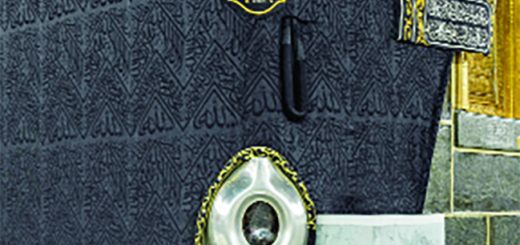A Celebration of Victory Over Death
 The festival of Santa Marta de Ribarteme is an opportunity for those who have survived near-death experiences to give thanks for their lives.
The festival of Santa Marta de Ribarteme is an opportunity for those who have survived near-death experiences to give thanks for their lives.
A symbolic victory of life
The crowd parts, allowing the first coffins to move through. A heavy silence hangs in the air. But all is not quite as it seems on this summer afternoon in Spain’s north-western region of Galicia. Though the majority of these coffins carry a body, the bodies are very much alive. “It is symbolic of the victory of life over death,” said Alfonso Besada Paraje, the local priest.
The festival of Santa Marta de Ribarteme, held every July in the tiny eponymous village, is an opportunity for those who have survived near-death experiences to give thanks for surviving.
A centuries-old practice
Some believe the festival dates back hundreds of years, but its origins remain mysterious. According to local lore, the ritual of carrying near-death-experience survivors in coffins to give thanks was originally practiced by pagans, but by the 12th Century, with the Catholic Church eager to stamp out pagan beliefs, it was forcibly incorporated into a Christian ceremony.
Since then, what was traditionally a provincial affair has morphed into an internationally renowned festival, with thousands of spectators packing the small streets of Santa Marta de Ribarteme each year. “People come from all over the world to witness this event now,” Besada Paraje told me.
 Celebrating survival
Celebrating survival
First mentioned in the Gospel of Luke, and sister to Mary Magdalene and Lazarus, Santa Marta (or St Martha) plays only a small part in the Bible. Traditionally the patron saint of cooks, service workers and housewives, her story after the gospels continues in France, where according to legend, she helped slay a dragon, earning herself the title ‘Marta, the Dominator’. Santa Marta’s ability to triumph in that deadly situation likely led her to be linked with this particular ritual.
Hours before the coffins appear, people gather at the church of Santa Marta. Mass is held in a giant marquee every half hour, while four priests give outdoor confession in the churchyard. Inside the church, the representation of Santa Marta, which will lead the procession, stands beside the altar, receiving a steady stream of visitors wishing to pay their respects.
No easy feat
The occupants of the coffins come with all kinds of stories. One man in his 20s from Madrid lies calmly, listening to music with one earphone in. “I did it to give thanks for my grandmother surviving her cancer,” he explained after the procession. He and his father made a pact to participate in the festival each year, and he had travelled nearly 600km from the Spanish capital to keep his word.
Friends and family take turns carrying the coffins; with the heat and the weight, it is no easy feat. The loop around the village is not far, but as the hills rise and fall the effort is discernible. As the procession begins the descent towards the church, there is a pervasive sense of relief.
 Many ways to give thanks
Many ways to give thanks
Shortly after midday the crowd begins to stir. As the first coffin reaches the churchyard gates, the pallbearers break out into song. “Virgin Santa Marta, star of the north, we bring you those who saw death,” they chant in a haunting melody.
Though coffins are preferred by the most devout, others choose different methods to complete the route, which are usually representative of their near-death experience. One woman participates in the procession each year on her knees after a serious illness nearly took both her legs 17 years ago. “I return each year to give thanks to Santa Marta,” she told me.
A light-hearted atmosphere
A marching band follows the coffins, and while the music remains relatively sombre, the atmosphere is light-hearted. For many, the festival is as much a chance to socialise as it is to give thanks. The stone benches on a small hill beside the church fill up quickly, as vendors pour copious amounts of wine and various food stalls come to life, the aromas of grilled meat and the Galician favourite pulpo a feira (boiled octopus with a hint of paprika) filling the air.
The sense of community, though strong almost anywhere in Spain, remains especially important in this traditionally isolated region. Galicia is rapidly modernising, but residents remain mindful of its traditions and way of life. “I’ve been here every year for as long as I can remember,” said 86-year-old Maria del Carmen, who lives a short walk from the church. “Life used to be so hard here in the village. It’s much easier now, but it’s important to remember.”
 A celebration of life, not death
A celebration of life, not death
When the procession arrives at the church and the coffins are lowered to the ground, all sorts of emotions can be observed. While some people smile triumphantly, others collapse into tears. One woman, who missed last year’s ceremony as she lay in a coma, steps sobbing from her coffin and is immediately engulfed by her family.
On its surface, the festival of Santa Marta de Ribarteme may seem ghoulish and the sight of coffins unsettling, but this is truly a celebration of life, not death. In the dazzling summer light, surrounded by the beautiful Galician countryside, with enticing smells and laughter drifting through the village, it’s hard to disagree – this is really living.

















Recent Comments